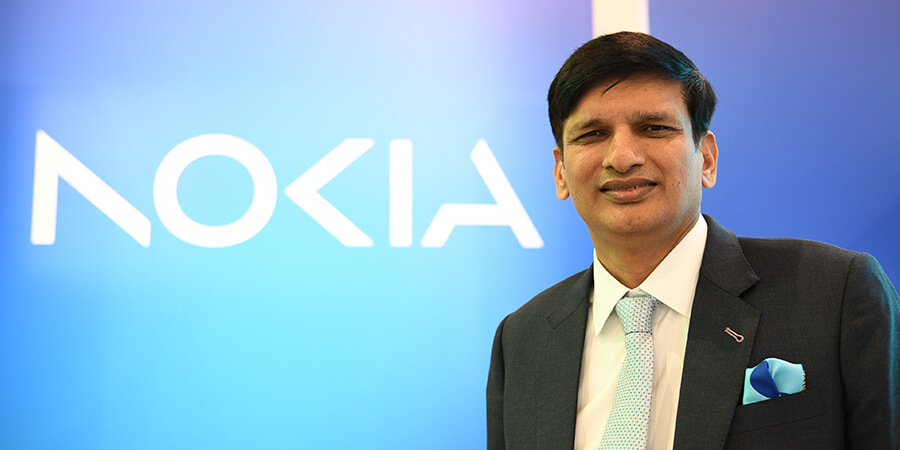At Mobile World Congress (MWC 2024), Telecom Review had the privilege of conducting an exclusive interview with Samar Mittal, VP, Cloud and Network Services, Nokia MEA, whereby the essence of energy-efficient networks, how to leverage technologies for power consumption, and his perspective on the cloudification trend in the region was discussed.
In your opinion, why is it important to have energy-efficient networks amidst today’s high demand for connectivity?
The reason for energy-efficient networks is divided into three different pillars. The first is ‘going green’— the more energy we save, the less carbon emissions we put into the environment, which means it's an environmentally-friendly solution. Second, due to the inflationary aspect and cost (which is evident in the networks and the way the networks are growing), it's always the right thing to create solutions using the technologies and the digital world to save energy and give savings back to the network. And lastly, energy-saving networks create more opportunities for operators to invest into the marketplace to generate more traffic for themselves and generate revenues that will help them improve their balance sheets as well.
What is at the core of Nokia’s energy-efficient solutions? Could you provide a real-life example of how Nokia's solution utilizes AI and ML to optimize power consumption?
At Nokia, we are fully committed to energy savings, and we recently committed to net-zero greenhouse gas emission by 2040. In the coming years, we will work very hard to improve the environment, and at the same time, provide energy-efficient solutions. In terms of the technology that we use, artificial intelligence (AI) and machine learning (ML) have created a lot of automation within the network, with a SaaS solution called AVA. We provide consumers with a solution where there is no performance impact, while generating energy-optimized solutions at the same time, which helps save energy and carbon emissions, and also helps with revenue generation for the operators.
Energy saving generates fiscal benefits, which are being translated into the networks to improve the network further. Due to AI and ML, everything is automated in such a way that when the energy is not required to its complete peak based on the traffic dimensions, we are able to automatically manage the networks in a way that helps the consumption of energy in an efficient way.
In the Middle East and Africa, energy is becoming a very important factor. In November 2023, we announced the commercial deployment of our AVA Energy Efficiency solution for Safaricom Kenya’s 5G, 4G, and 3G cells, where we provided this AI/ML solution for approximately 30,000 cells. This rollout is expected to realize network cost savings of 8-10%, enabling this operator to monetize those savings into more investments in the marketplace. We will replicate this solution into different marketplaces because fuel and inflation are further raising energy costs for the operators. At the same time, as technology grows and more sites and spectrum come in, being energy-efficient becomes more relevant to the marketplace that we are serving.
The MEA region is among the most data-intensive users worldwide. How will Nokia enhance its services and products for CSPs to address this?
In the Middle East and Africa, we have three dimensions. You have networks, which are on the cusp of technology discontinuity as they move from 4G to 5G (which means a lot of new data-intensive solutions will be required). If we talk about certain markets such as the UAE, Saudi, and a couple of others where 5G is already mature, then the data is growing in a different curve altogether. Third, we are still trying to monetize 3G and 4G in some areas.
For all three different pillars and networks, we are providing solutions for various dimensions by using the digital world and artificial intelligence and machine learning. We're providing edge networks with packet-core solutions at the cusp, which helps to generate more data with less backhaul. We're providing solutions in the cloud (CAP model) which separates the control function and user plane, and creates solutions that help to simplify launching the data services into the marketplace because consumers keep changing service requirements, on an almost every-second basis. Hence, you need to have networks that are autonomous and are able to provide these services.
That’s where the Nokia’s AVA comes in— with a lot of domain and service orchestration, AI/ML, and even end-to-end security solutions are provided. Once the data comes to the core, the security becomes very relevant because we're not only serving consumers but also serving enterprise customers.
Overall, Nokia provides simplified, autonomous and secured networks; energy-efficient solutions on the data side; and lastly, modular solutions to serve the three pillars of the Middle East and Africa.
Cloud is being heavily integrated by telcos within their operations. How do you anticipate this trend evolving in the MEA region, and what strategies do you have in place for alignment with it in 2024?
From a cloud standpoint, all our energy-efficient solutions are based on anyCloud, which means our applications can be hosted on any cloud, creating opportunities for operators to not only use hyperscalers but also choose different cloud solutions. They can use their applications on any cloud that they want to deploy into the network. The Safaricom Kenya reference is also based on the anyCloud solution.
From core business applications to security, anyCloud becomes very relevant because operators are choosing different infrastructures based on their needs. Some operators already have certain cloud solutions with different vendors but they want to use the same platforms.
Nokia is committed to providing that flexibility to operators so that they do not need to change the infrastructure when it comes to these kinds of solutionsand that's how our journey will be enabling a lot of cloudification in the marketplace.
